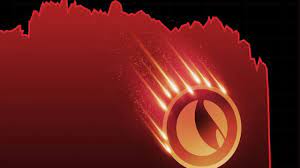Andreas Antonopoulos explains the life cycle of a transaction on the Bitcoin blockchain
Since the birth of Bitcoin, its intricate concept has been the content that many users in the field of encryption are trying to understand.
Andreas Antonopoulos, the bitcoin evangelist and author of Mastering Bitcoin, explains in his latest video the entire life cycle of a wallet transaction from start to finish.
Antonopoulos pointed out that from someone sending a transaction from the wallet to their confirmation on the Bitcoin blockchain , the wallet constructs the transaction by accumulating bitcoin into the user's wallet and assigning the address.
The user's wallet then transmits the transaction information to one of the many nodes it is connected to, from where it can be sent to "one or two or even eight other nodes." He added:
- What is the winning gene in the blockchain marathon?
- Decentralized finance (DeFi) has become a mainstream trend? Look at these killer products, maybe you will understand
- After earning 1.1 billion, 2345 bid farewell to the blockchain?
"The transaction is then transmitted to other nodes, which can be mining nodes, e-commerce payment gateways, and many similar options.
Each node will receive the transaction from your node and verify each transaction. When a node receives a transaction, they don't know if it was created or forwarded by you, so each transaction needs to be verified separately. ” Antonopoulos went on to point out that if all the nodes pass the verification, that is, if the payment details are correct and there is no double flowering on the blockchain , then a "flood-like propagation" process will eventually take place .
Through this process, transaction information will be sent to each of the other nodes, some of which may be mining nodes. In his words:
“Once the trade reaches the mining pool, it will maintain an unconfirmed trading pool status, just like a bucket that stores all unconfirmed data. This pool is called a “mempool”.
Also, be aware that there is no 'specific' memory pool, but rather a 'one' memory pool. Information in different memory pools may have 99% overlap, but the exact same situation will never occur. ” According to Antonopoulos, the role of the memory pool is to provide trades for miners, allowing them to add a new block and then continue to compete for the next block. Miners often have to construct a block and then perform a Work Proof (PoW) to make it a confirmed block .
Antonopoulos claims that once the block is completed, information will be sent to the mining equipment to resolve the PoW problem for that particular block, and perhaps after a “billion-hash collision”, the miners will find the block. The bitcoin evangelist said in response to the transmission of information:
“Once the PoW problem is resolved, the mining node will propagate the node back in the way it was received. The node verifies the block on return, and once all nodes have confirmed its validity, the user’s wallet will know the pen The transaction has a confirmation. This is the entire life cycle of a transaction."
We will continue to update Blocking; if you have any questions or suggestions, please contact us!
Was this article helpful?
93 out of 132 found this helpful
Related articles
- Attacking DApp: What new things will grow on the blockchain?
- Behind the surge in Brazilian bitcoin trading volume
- Video|"8" Polkadot founder Gavin Wood: It's time to replace POW with POS
- The Game Theory of the Amaranth Culture and the IEO Phenomenon in the Currency Circle——Intelligent Pig Game
- The registration of the 3rd China Blockchain Development Competition officially opened
- In those years, the traditional financial sponsorship system practiced on the trading platform
- Viewpoint | Why is progressive decentralization a viable way to develop contracts?






